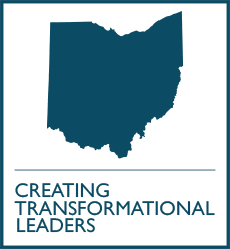Jul 26

From Pharmacy to Research: Tori Czech, Pharm.D. (’16)
Some students develop a firm idea of their career paths early on in life; others discover their passion through exploration. Tori Czech, Pharm.D. (’16), and Ph.D. candidate in the Integrative Pharmaceutical Medicine (IPM) Graduate Program, always knew she wanted to be a researcher, but never anticipated going to pharmacy school.
While Czech was working toward an undergraduate degree at Capital University in Columbus, Ohio, her father persuaded her to look into a number of pharmacy schools—Northeast Ohio Medical University among them.
“I didn’t know much about pharmacy, but I agreed to check out the University because I knew I wanted to help people. I came here on a visit and fell in love with NEOMED. It actually reminds me of Capital University a lot, with its smaller feel. It was just a really good fit and I loved it here and I never wanted to leave. I’m still here six years later,” says Dr. Czech with a laugh.
Finding her niche
During her second year in NEOMED’s College of Pharmacy, Dr. Czech took an elective course in the lab of Denise Inman, Ph.D., assistant professor of pharmaceutical science. “I realized this is what I want to do forever,” says Dr. Czech. These days, she puts her pharmacy degree to work in the lab of Moses Oyewumi, Ph.D., an associate professor of pharmaceutical sciences who focuses on the bioengineering of drug delivery systems.
“I have always been interested in drug delivery—figuring out how to get medications to the right place in the body,” says Dr. Czech.
She is working to develop and test hydrogels loaded with drugs that could potentially help broken bones heal faster, when injected close to the bone, directly at the fracture site. Czech received a 2018 Northeast Ohio Medical University Integrated Pharmaceutical Medicine Graduate Research Grant to study the effect of Osteoactivin (a protein found in bone cells) released from hydrogel drug delivery systems. Osteoactivin is studied by a research team headed by Fayez Safadi, Ph.D., professor of anatomy and neurobiology.
Because of the collaboration between doctors Oyewumi and Safadi, Dr. Czech can study both how the drug delivery system releases the protein and the overall effect it has on healing.
Backing up a step–what are hydrogels?
“Hydrogels are networks dispersed in water. The hydrogels I use are copolymeric, which form little micelles—basically like soap—in water. It’s not a detergent, but they have the same kind of shape. Drugs can either get trapped inside those micelles or stick to the outside. What I study, Osteoactivin, sticks to the outside. The hydrogel that I use is extremely thermosensitive—which means even slight temperature changes affect it. What’s really interesting is that at room temperature, it’s a liquid. I can actually pass it through a small gauge needle, like a tuberculosis syringe needle, and it comes out really easily. At warmer temperatures, like body temperature, it immediately turns into a super-viscous gel that even when you turn it upside down, it doesn’t move. It’s cool because you can actually inject it, then it will gel rapidly,” explains Dr. Czech.
Dr. Czech says using hydrogels is relatively new, so she enjoys every opportunity she gets to explain them to those eager to learn.

